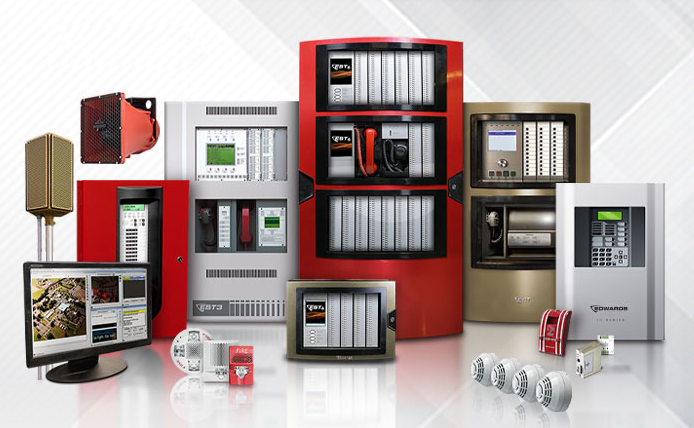Safety is a priority for everyone, especially in commercial buildings where protecting lives and property is critical. Enter fire supervisory systems, the backbone of modern fire safety management. But what exactly are they, and why are they so essential? This article will provide a comprehensive overview of fire supervisory systems, their components, benefits, and practical applications.
What Is a Fire Supervisory System?
A fire supervisory system is a sophisticated network of devices and controls designed to monitor, detect, and respond to fire-related incidents within a building. These systems act as an essential layer of protection, ensuring early fire detection and enabling quick actions to minimize damage and harm.
Unlike conventional fire alarms, fire supervisory systems focus on controlling other fire safety measures, such as sprinkler systems, emergency lighting, and HVAC controls, ensuring all systems function efficiently during an emergency.
The Importance of Fire Supervisory Systems
Why should every business invest in a robust fire supervisory system? The answer is simple: lives and assets depend on it. Here’s why they’re critical:
- Early Detection
These systems monitor fire-related equipment, detecting malfunctions or irregularities before an issue escalates.
- Coordination
They act as the brain of your fire safety infrastructure, ensuring all devices work harmoniously during a fire incident.
- Code Compliance
Many building codes and legal requirements mandate the use of fire supervisory systems to meet safety standards.
- Peace of Mind
Knowing your building is equipped with a reliable system makes for a safer environment for occupants, ensuring business continuity and safeguarding lives.
Components of Fire Supervisory Systems
A fire supervisory system consists of various interconnected components, each playing a crucial role in fire prevention and safety.
1. Fire Alarm Control Panel (FACP)
The central hub that processes signals from various fire safety devices and initiates the appropriate responses.
2. Smoke and Heat Detectors
Devices that sense smoke or a rise in temperature, promptly alerting the system to potential danger.
3. Sprinkler Systems and Supervisory Switches
Sprinklers release water to suppress fires, while supervisory switches monitor the overall functionality of the water system.
4. Emergency Lighting
Keeps pathways illuminated during an emergency, helping occupants evacuate safely. (For in-depth information about emergency lighting, check out the “Emergency Lights 101 Guide.”)
5. Annunciators
Display critical information, such as which zone of the building has been triggered, allowing first responders to act quickly.
Types of Fire Supervisory Systems
Not all fire supervisory systems are the same; they vary based on the complexity and requirements of the building. Here are the common types:
1. Conventional Systems
Divide the building into zones; while cost-effective, they provide limited location information during an incident.
2. Addressable Systems
Each device has a unique address, enabling precise identification of the triggered point. Suitable for larger or more complex buildings.
3. Wireless Systems
Ideal for renovations or areas where wiring is impractical. They offer flexibility while maintaining robust communication.
Regulations and Standards
Compliance with fire safety codes is non-negotiable. Fire supervisory systems must adhere to standards like NFPA 72 (National Fire Alarm and Signaling Code) in the US, among others. These regulations ensure systems meet stringent requirements for reliability, design, and installation.
Installation and Maintenance
Installing a fire supervisory system isn’t a “set it and forget it” scenario. Here’s what you need to know:
Installation:
- Conduct a fire risk assessment to identify the system that meets your building’s needs.
- Hire certified professionals to ensure compliance with standards and proper integration of all components.
Maintenance:
- Regularly test and inspect the system, typically once a month or as required by local regulations.
- Replace aging or malfunctioning components to maintain peak efficiency.
- Keep records of all inspections, tests, and repairs for compliance and future references.
Benefits of Implementing a Fire Supervisory System
Implementing a fire supervisory system is an investment in safety and efficiency. Here’s how:
- Reduced Response Time
Prompt detection and alerts enable quicker evacuation and emergency response.
- Customization
Systems can be tailored to meet the specific needs of different facilities.
- Cost Efficiency
Early detection can significantly reduce fire damage, saving costs in the long run.
- Enhanced Safety
Monitors critical systems like sprinklers, giving you an added layer of protection.
Case Studies and Examples
Case Study 1:
Retail Store Installation
A large-chain retailer installed an addressable fire supervisory system in its flagship store. Within months, the system alerted them to a small electrical issue, preventing what could have been a massive fire.
Case Study 2:
High-Rise Residential Complex
A wireless fire supervisory system was implemented in a historic high-rise, maintaining the building’s aesthetic while ensuring state-of-the-art protection.
The Future of Fire Supervisory Systems
With advancements in artificial intelligence (AI) and the Internet of Things (IoT), fire supervisory systems are becoming smarter and more efficient. New technologies focus on predictive analysis, where systems can predict potential fire risks based on real-time data, offering unparalleled safety and prevention.
FAQ
1. What’s the difference between a fire alarm and a fire supervisory system?
A fire alarm alerts occupants about a fire, while a fire supervisory system oversees fire prevention equipment and ensures functionality.
2. Are these systems expensive?
Costs vary based on complexity, but the investment often offsets the potential cost of fire damage.
3. How often should the system be tested?
Regular testing should occur monthly, and professional inspections should be conducted annually.
Chart Comparison of Types
|
Feature |
Conventional Systems |
Addressable Systems |
Wireless Systems |
|---|---|---|---|
|
Cost |
Lowest |
Moderate |
High |
|
Location Information |
Limited |
Precise |
Precise |
|
Flexibility |
Low |
High |
Very High |
| Installation Ease | High-effort | Moderate | Easy |
Ensuring Safety with Reliable Systems
Fire supervisory systems play an indispensable role in creating a safer environment for people and property. By integrating advanced components and adhering to regulations, these systems provide proactive, life-saving solutions.
Whether you’re protecting a commercial property, a high-rise residential complex, or an industrial facility, investing in the right fire supervisory system is key to peace of mind and compliance. Don’t wait until it’s too late; start exploring modern fire safety solutions today for a secure tomorrow.

